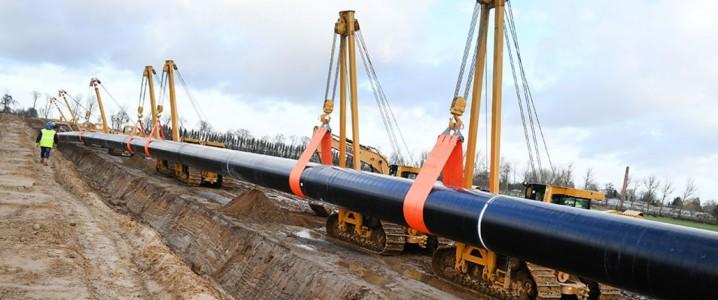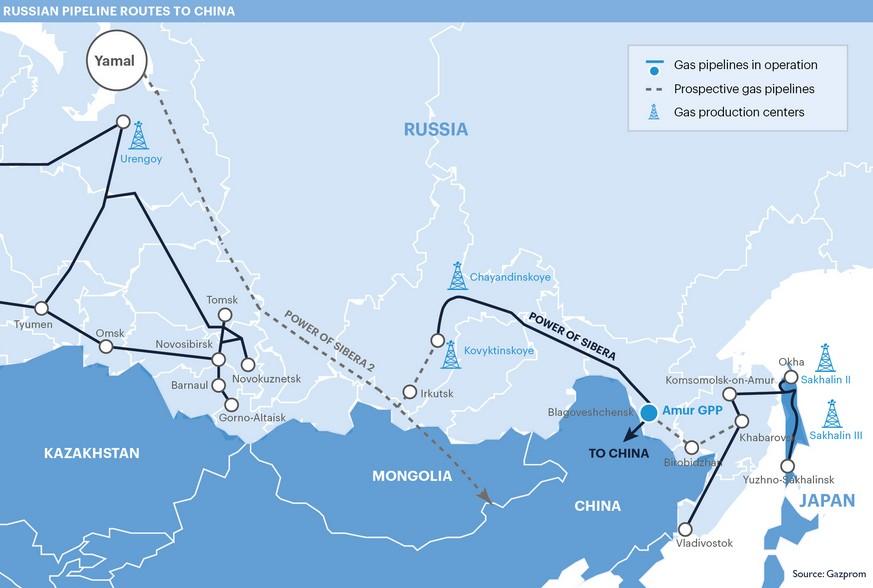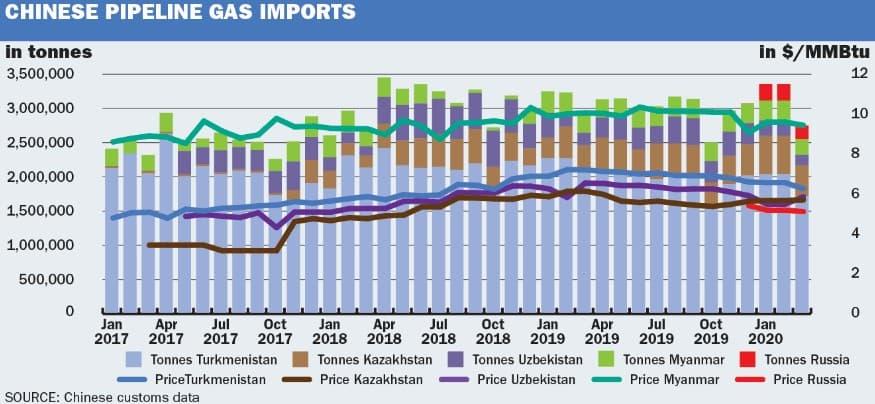Russia Eyes Another Massive Gas Pipeline To China
Tyler Durden
Thu, 07/09/2020 – 20:40
Authored by Vanand Meliksetian via OilPrice.com,
The Chinese and Russian leadership have over the years intensified political and economic collaboration. Troubling relations with the West in general and the U.S. in particular are increasingly driving Beijing and Moscow into each other’s arms. The countries’ economies are highly complementary, which is an opportunity for further integration. While China has become the world’s factory and an important technological powerhouse, Russia is extremely wealthy in terms of energy and minerals.
The obvious advantages have led to the landmark $400 billion ‘Power of Siberia pipeline’ agreement for the export of natural gas from Russia’s far east to northern China. On top of this success, Gazprom and Moscow have been pushing for the ‘Power of Siberia-2 pipeline’ from Western Siberia to China’s Xinjiang region. The proposal has been met with a lukewarm response from Beijing because the region is already well-supplied with Central Asian gas. However, due to the Coronavirus pandemic and Gazprom’s adjusted plan, the Power of Siberia-2 project is gaining momentum.
Russia’s motives
Russia’s relations with the West nosedived after the Ukraine crisis and the annexation of Crimea. Ever since Moscow has been reaffirming that it’s not politically isolated by increasingly engaging with its giant Asian neighbor. The problem, however, is that the majority of Gazprom’s export capabilities end in Europe. Pivoting to China, therefore, was essential to lessen dependence.
Gazprom’s initial proposal through the Altai region and into Western China has been replaced with the ‘Mongolia alternative’ with an annual capacity of 50 bcm. The recent Russian assertiveness comes from Moscow’s assertion that its position in key market Europe is under threat. The Corona pandemic has increased the pressure even further. According to Alexander Gabuev, a senior fellow at the Carnegie Moscow Center, “Gazprom sees that its position in the European market is eroding over the long run because of growing competition and a push by some countries to reduce dependence on Russia. Gazprom has to market gas from fields in Yamal and Western Siberia, and China is the big market next door.”
China is essential for Russia which can be seen in Gazprom’s fast-tracking of investments concerning the enlargement of Power of Siberia-1 pipeline. Despite quarantine measures, some 3,000 laborers were infected with Corona who were drilling new wells and constructing power and compressor stations.
China’s motives
Of the two parties, Russia is more inclined to strike a deal. Beijing, in theory, has more options due to its relative proximity to large natural gas producers and the size and potential of the Chinese market. However, since Donald Trump’s presidency relations between the U.S. and China have deteriorated strongly which is pushing Beijing and Moscow towards each other.
Economic relations between Russia and China were already poised to grow due to the complementarity of their economies. The pandemic has exacerbated both the upward and downward trends of relations with Russia and the U.S.
According to Lin Boqiang, dean of the China Institute for Studies in Energy Policy at Xiamen University, ”before the current situation between China and the United States, China was planning to buy a lot of energy from the U.S. because of the trade agreement. But now the situation looks uncertain, and that will certainly encourage China to cooperate more with Russia.”
The alternatives for Bejing are increasing imports from Central Asia and LNG. Both are not appealing due to different reasons. LNG is either shipped from politically unfriendly nations, e.g. the U.S. and Australia, or cargoes need to travel through bottlenecks such as the strait of Malacca. Concerning Central Asia, imports from the region dwarf Russia’s meaning a choice for the latter would improve energy security through diversification. Furthermore, Siberian natural gas is very competitive due to the favorable price difference.
Striking a deal
Despite the favorable environment, it is yet to be seen whether a deal can be struck. In the case of Power of Siberia-1, it took four years to sign a contract from the moment terms and conditions were agreed. Furthermore, construction took five years after the long-term contract agreement was signed. Power of Siberia-2 could take a similar amount of time meaning it could be operational around 2030.
Gazprom’s flexibility in considering the Mongolia route offers an additional advantage. Russian gas could be supplied to the heavily polluted capital city Ulan Bator which ranks among the most polluted cities in the world. Poverty and a relatively small state budget rule out big energy projects that would bring cleaner fuels to Mongolia’s cities. The Power of Siberia-2 pipeline, therefore, is a unique opportunity.
However, the biggest beneficiaries would be China and Russia because the pipeline could further solidify the political and economic integration of the world’s second-biggest economy with the world’s largest energy producer.


